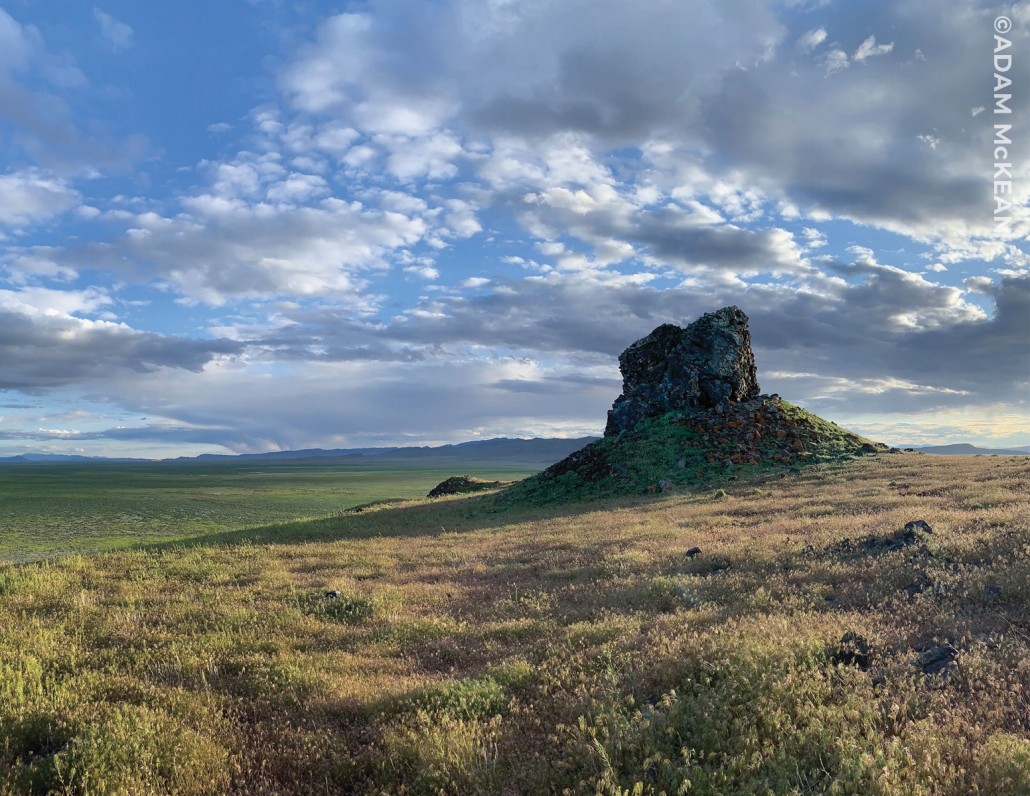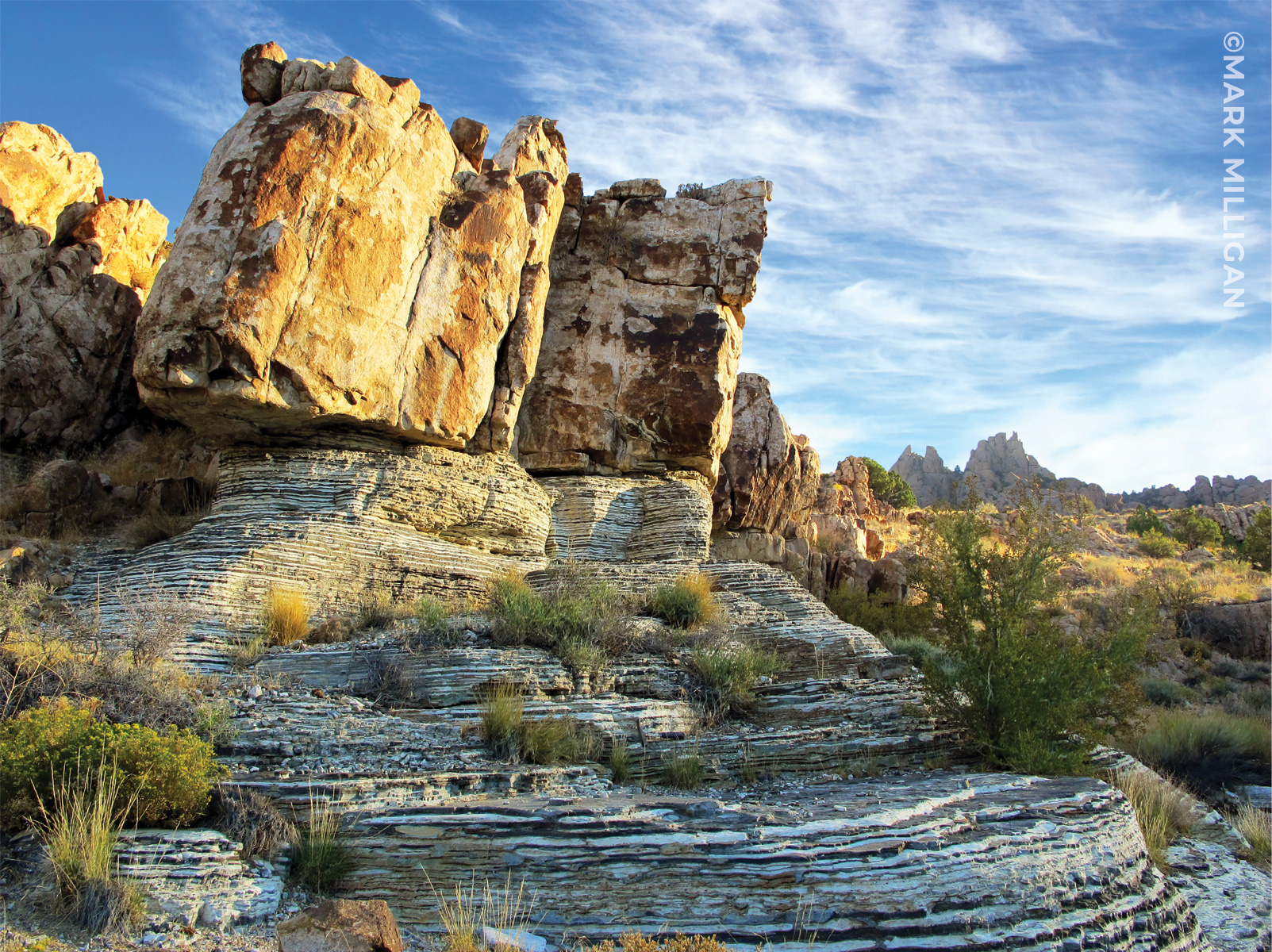Snow-capped hoodoos of the Eocene-age Pink Member of the Claron Formation glow in the evening sun. These hoodoos were sculpted by the effects of weathering and erosion from ice and rain. Learn more about how hoodoos are formed.
Bryce Canyon National Park, Garfield County. Photo by Trevor Schlossnagle.
The evening sun casts a long shadow of a basaltic knob at Pot Mountain. These early Pleistocene-age rocks are likely eroded volcanic necks that may have erupted into water. The vents are now eroded and partially concealed by shoreline gravel of the late Pleistocene Lake Bonneville, giving the mountain a teapot-like shape when viewed from a distance.
Sevier Desert, Millard County. Photo by Adam McKean.
Fall colors and snow compliment brightly colored lichen on Miocene-age volcanic boulders on the shore of Johnson Valley Reservoir. Cloud shadows dapple the Fish Lake Hightop, one of several high plateaus in central Utah dominated by Tertiary-age volcanic rocks.
Fishlake National Forest, Sevier County, Utah. Photo by J. Lucy Jordan.
Near the base of Notch Peak, pink Jurassic-age granite intrudes much older thinly bedded gray argillite and white marble of the Cambrian-age Marjum Formation. Deep in the Earth’s crust 170 million years ago, high heat and fluids from the granite metamorphosed the surrounding rock, turning limestone into marble and shale into argillite.
House Range, Millard County, Utah. Photo by Mark Milligan.

 Lance Weaver
Lance Weaver
 Trevor Schlossnagle
Trevor Schlossnagle

















